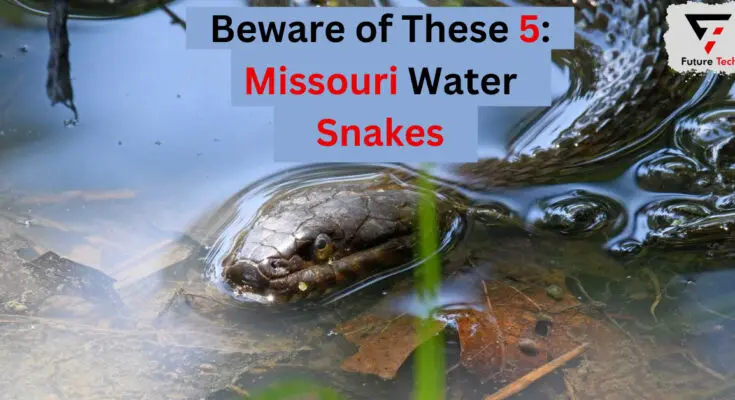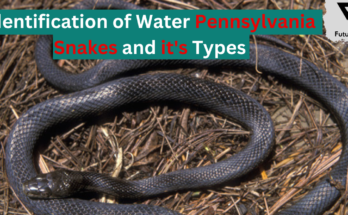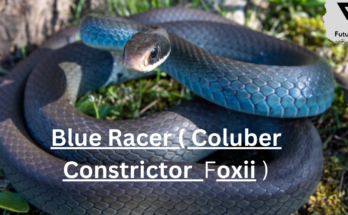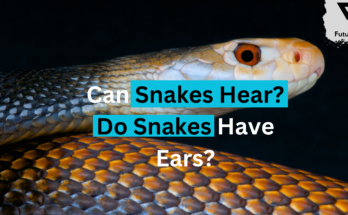Due to the abundance of waterways in the state, such as the Missouri Water Snakes River, Mississippi River, and Lake of the Ozarks, Missouri Water Snakes is a haven for a wide variety of aquatic animals, including snakes. While most snakes are aquatic, many spend most of their lives on land. Therefore, we’ll focus on Missouri’s water snakes in this post. In addition to providing helpful information about each species, I will also show you a photo of each so you can identify it in the field. In addition, I’ll let you know whether the snake is poisonous. Do you, too, find water snakes intriguing, or is it just me? There’s something quite fascinating about the way they go over the sea. I always make it a point to check for any moving water snakes whenever I am close to a pond, marsh, or other body of water. You’re going to learn about ten Missouri-dwelling water snakes today. The species listed below are classified as either semi-aquatic or aquatic. Thus, it’s likely that you may see them swimming or close to the water, such as when they sunbake on a bank.
5 KINDS OF WATER SNAKES FOUND IN MISSOURI
1. The typical water snake
In Missouri, there are two varieties of the shared water snake. Which one you view will determine which colors they have! Pale grey to dark brown with streaks of reddish-brown to black coloration. As they mature, large adults become nearly entirely black or dark brown. Most are light grey, while some have a reddish tint. They feature black crossbands around the head. Dark, square-shaped blotches replace the crossbands as you go down the snake.
The most prevalent species of watersnake in Missouri is this one!
Common water snakes like still or slowly flowing bodies, including lakes, ponds, vernal pools, marshes, and gently flowing rivers and streams. They are often seen lounging on logs or rocks near the water. Common Watersnakes retreat into the water when startled. They will, however, quickly defend themselves if they are seized or taken prisoner. They will flatten their body and hit the assailant, releasing an offensive scent from glands at the base of their tail.
Differentiating Features:
Their saliva has a weak anticoagulant that may make bites bleed, exacerbating the damage. Water snakes rely on these vital defense systems to fend off predators, including foxes, opossums, snapping turtles, raccoons, and birds of prey. In Missouri, standard water snake numbers are thought to be steady. Nevertheless, like many others, this species is threatened by habitat degradation and loss. Unfortunately, humans often murder them out of fear.
2. Watersnake with a plain belly
Adults are about 24 and 40 inches long with a hefty body. Solid shades of black, grey, brown, or olive. They feature a simple, unmarked underside that varies in color from red to yellow, as the name implies. Also known as the Blotched Watersnake, Redbelly, Yellowbelly, or Copperbelly.
The Plain-bellied Watersnake inhabits areas close to rivers, floodplains, lakes, ponds, and marshes, among other water sources. This species differs from other Missourian water snakes because it spends a disproportionate amount of time on land. They live far away from water sources in wooded areas, especially in hot and muggy weather.
Differentiating Features:
They eat fish, crayfish, salamanders, frogs, other amphibians, and terrestrial and aquatic prey. This species is also unique in that it will sit and wait to ambush its victim, mainly if it is on land. Nearly every other kind of water snake aggressively pursues and hunts its prey! In August or September, the females give birth to live young. Although a stated litter size of 55, the average age of these is 18! These unusual water snakes may also reproduce asexually by developing an embryo without sperm fertilization, a process known as parthenogenesis.
3. Cottonmouth in the North
Fish and frogs make up most of the Northern Cottonmouth’s food since they are usually found close to bodies of water. However, due to their opportunistic nature, they will also consume other snakes, birds, tiny alligators, turtles, and small animals.
These water snakes use a variety of protective strategies to ward off would-be predators. Frequently, they will draw their heads back and shake their tail in the leaf litter before opening their mouths to hiss and reveal a white inside. It was this specific exhibit that gave them the moniker “cottonmouth.”
Please exercise particular care if you encounter an unfamiliar water snake since it is deadly. Many species have similar appearances, particularly when you glimpse them as they swim across the ocean. Fortunately, being bitten by a Northern Cottonmouth is not shared. However, because their venom damages tissue, when it does occur, it is pretty dangerous. Although they seldom bite someone to death, they may leave scars and cause bruising and swelling.
Differentiating Features:
Adults are about 26 and 35 inches long. Generally speaking, females are smaller than men. With a large head, elliptical pupils, a blunt snout, and heat-sensing pits between the eyes and nostrils, most individuals are dark grey to black. Some people are colored brown, grey, tan, or blackish. Often referred to as Gapers, Black Moccasins, or Water Moccasins.
In Missouri, cottonmouths are the only species of water snake with venom. Watch out for these water snakes in areas with marshes, swamps, ponds, rivers, and streams that move slowly and in flooded fields and drainage ditches. However, they are not exclusive to aquatic environments. In addition, cottonmouths may be found in grasslands, dune regions, palmetto thickets, and pine woods.
4. Widely Spaced Watersnake
Being primarily nocturnal, these water snakes spend much of their time searching the coastline for tiny fish and frogs. Like other water snakes, they seize their victim quickly and consume it whole. Wide-banded The water snake is a non-venomous, placid animal. However, they may bite if caught or seized, flatten their heads, and produce an offensive-smelling musk from glands at the tip of their tail. Regretfully, they are sometimes mistaken for the poisonous cottonmouth, which results in their death.
Differentiating Features:
Adults are about 24 and 48 inches long. Usually dark in color, they have asymmetrical, yellowish crossbands. a Southern Watersnake subspecies. In Missouri, the Broad-banded Watersnake is close to almost every freshwater source within its range. Everywhere you go—lakes, ponds, rivers, wetlands, marshes, and streams—look for them. They may often be seen sunbathing on branches that dangle over the lake.
5. Diamond-supported water snake
These water snakes’ principal food sources, fish and frogs, are typically visible to them while they lurk on overhanging branches in their native environment. They catch their victim, carry it to the shore, and wait for its expiration date before devouring it. This habit is rare since most other water snakes consume their prey alive.
If they feel threatened, diamond-backed water snakes will quickly dive under the surface and disappear. If trapped, they will bite and release an unpleasant smell from glands at the base of their tail. They are relatively widespread. Hence, they are not considered an endangered species. Unfortunately, ignorance sometimes leads to their demise. They are often mistaken for the very lethal cottonmouths and rattlesnakes.
Distinguishing characteristics:
The length of an adult is between thirty and forty-eight inches. It can be colored olive green, brown, dark brown, or yellowish. Look for a black, chain-like pattern on the back. Broad body, yellow belly, and black half-moons. The Diamond-backed Watersnake may be found in several marshy places in Missouri. They like slow-moving streams with overhanging vegetation, bogs, ponds, and lazy rivers.
Conclusion
Because Missouri has so many rivers and lakes, such as the Missouri River, Mississippi River, and Lake of the Ozarks, it is home to many aquatic species, including water snakes. These snakes, categorized as oceanic or semi-aquatic, are often seen swimming or near bodies of water.
In Missouri, there are two different kinds of common water snakes: those with a plain belly, also called the Blotched Watersnake, Redbelly, Yellowbelly, or Copperbelly, and those with a belly that flows still or slowly. Common water snakes often relax on logs or rocks close to the water; they quickly return to the water when frightened. They attack the attacker by flattening their body and producing an offensive fragrance from glands near the base of their tail.




